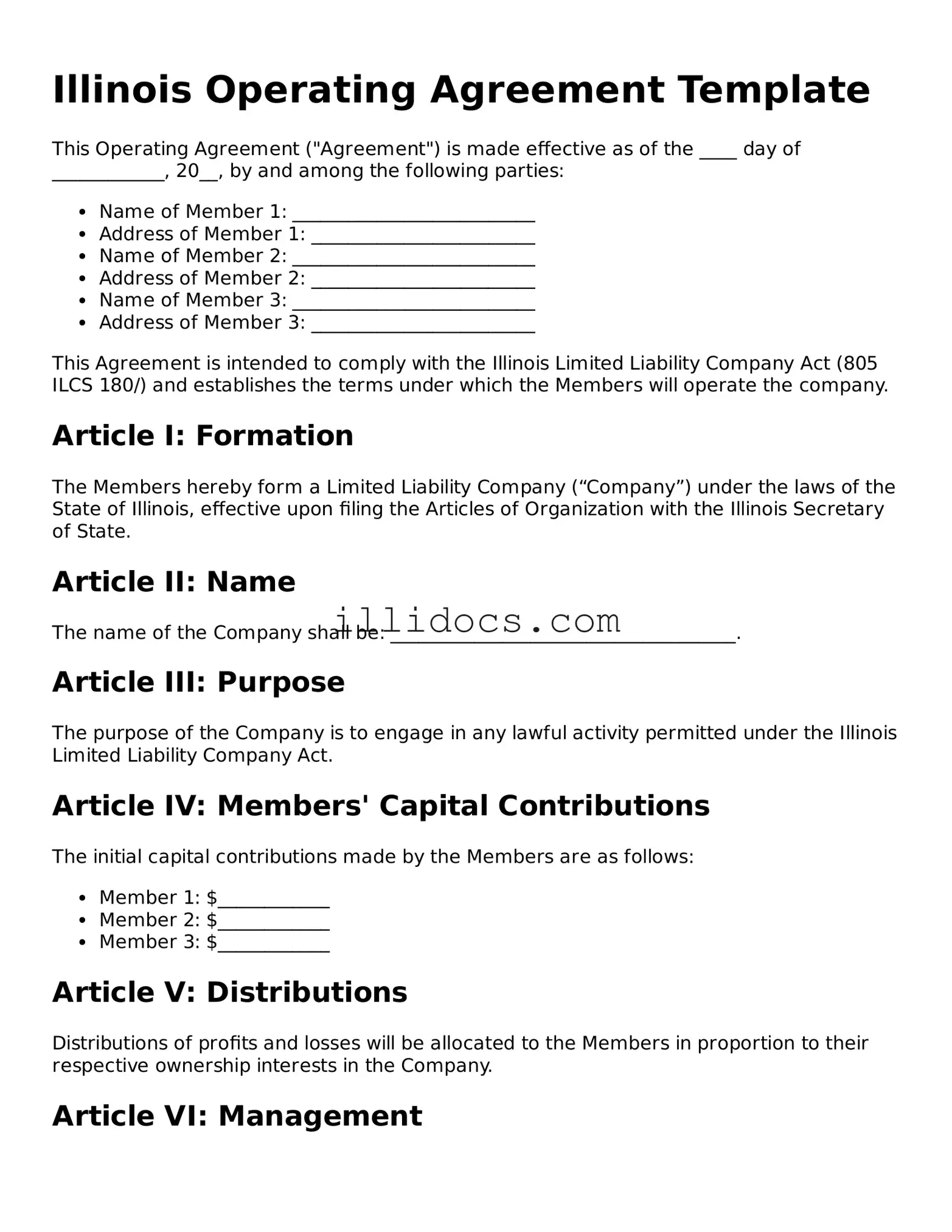What is an Illinois Operating Agreement?
An Illinois Operating Agreement is a legal document that outlines the management structure and operational guidelines for a Limited Liability Company (LLC) in Illinois. It serves as an internal agreement among the members of the LLC, detailing their rights, responsibilities, and the distribution of profits and losses. This document is crucial for ensuring clarity and preventing disputes among members.
Is an Operating Agreement required in Illinois?
No, Illinois law does not require LLCs to have an Operating Agreement. However, having one is highly recommended. An Operating Agreement provides a framework for the management of the LLC and can help protect the members' limited liability status. It also assists in addressing issues that may arise, thereby reducing the likelihood of conflicts.
Who should create the Operating Agreement?
The members of the LLC should create the Operating Agreement. It is advisable for all members to participate in the drafting process to ensure that everyone's interests and expectations are considered. Consulting with a legal professional during this process can also provide valuable insights and help avoid potential pitfalls.
What key elements should be included in the Operating Agreement?
Essential elements of an Operating Agreement typically include the LLC's name, purpose, member contributions, profit and loss distribution, management structure, voting rights, and procedures for adding or removing members. Additionally, it should address how disputes will be resolved and outline the process for dissolution of the LLC if necessary.
Can the Operating Agreement be amended?
Yes, the Operating Agreement can be amended. The process for making amendments should be clearly outlined within the document itself. Typically, amendments require the consent of a certain percentage of the members, ensuring that all parties have a say in significant changes to the agreement.
What happens if there is no Operating Agreement?
If an LLC does not have an Operating Agreement, it will be governed by Illinois state law regarding LLCs. This means that the default rules may not reflect the members' intentions or preferences. Without a tailored Operating Agreement, members may face challenges in decision-making and profit distribution, potentially leading to disputes.
How is the Operating Agreement enforced?
The Operating Agreement is a binding contract among the members of the LLC. If a member fails to adhere to the terms outlined in the agreement, other members can seek legal remedies. Enforcement typically involves negotiation, mediation, or, in some cases, litigation, depending on the severity of the breach.
Can an Operating Agreement be used for other types of business entities?
While the Operating Agreement is specifically designed for LLCs, other business entities, such as partnerships and corporations, have their own governing documents. For partnerships, a Partnership Agreement is used, while corporations typically rely on Bylaws. Each document serves a similar purpose in defining the structure and operations of the respective business entity.
